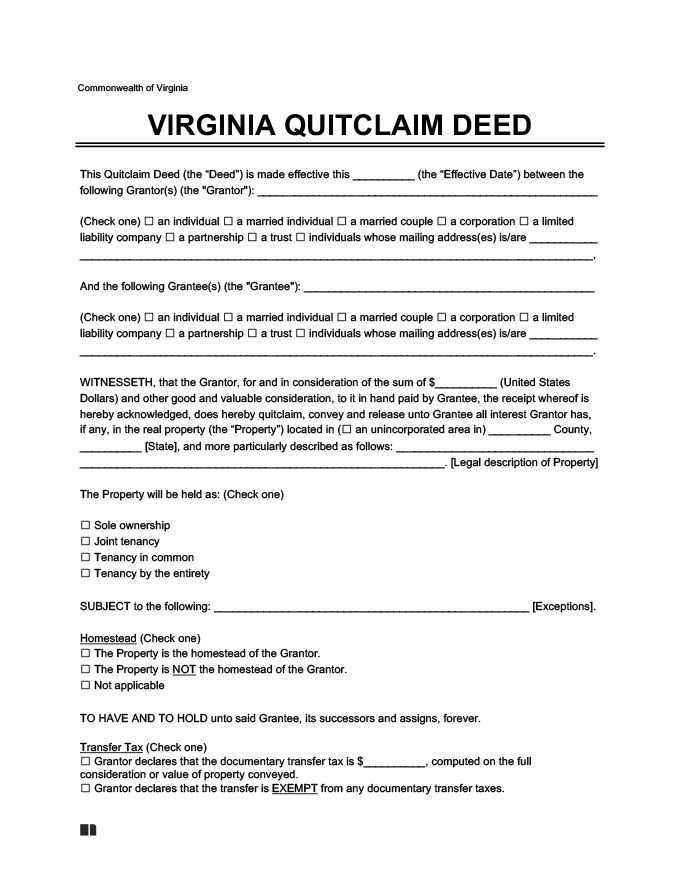Improve your chances of success when filing a quitclaim deed in Virginia by following these steps. Our guide helps you perfect the process so you can experience a smooth property transfer even when the grantor doesn’t make any promises or warranties.
Step 1: Gather the Necessary Filing Information
Gather the original deed to access the property’s legal description. If you don’t have a copy of the original deed, you may need to request one from your local County Circuit Court Clerk.
Step 2: Consider Legal Assistance
Virginia doesn’t have laws prohibiting you from preparing a quitclaim deed form alone. If you decide to file yourself, add your information in the “Prepared by” section and note yourself as the grantor.
Even though you can complete the process independently, consider hiring a qualified individual for assistance. If you hire an attorney or professional drafter, ensure they list themselves as the preparer.
Step 3: Fill in Pertinent Information
Fill in pertinent information on your quitclaim deed form, including the parties’ names, the property’s legal description, the property’s value, and consideration exchanged (if applicable).
When you first mention the grantor’s and grantee’s names in your deed, you must either underline the last names or write them in capital letters (Va. Code § 17.1-223 (A)(i)). After each name, write “as Grantor(s)” and “as Grantee(s)” respectively.
Step 4: Note Any Tax Exemptions
If the transfer is exempt from specific taxes, you must include the basis for this exemption on the first page of the deed, per Va. Code § 17.1-223 (A)(iv). Because exemptions are a more complicated part of the process, consider consulting with a property attorney if you think you may be eligible.
Step 5: Fill out Accompanying Documents
In Virginia, you must complete and attach a land record cover sheet to any document transferring property (Va. Code § 17.1-227.1).
Some conveyances may require you to include additional documents. For example, if the property isn’t up-to-date with building code or zoning ordinances, you must complete a Building Code or Zoning Ordinance Violations Disclosure (Va. Code § 55.1-706). Another example is the New Dwelling Disclosure, which is required if a new property has issues that constitute a building code violation (Va. Code § 55.1-702(B)).
Step 6: Sign and File
The grantor must sign the deed and have either two subscribing witnesses or a notary public observe their signature (Va. Code § 55.1-612).
Locate the Virginia county clerk’s office in the county where the property is located. Bring the required land record cover sheet, properly signed quitclaim deed, and payment method for fees and taxes. You can estimate what you’ll owe using the state’s online deed fee calculator.
Step 7: Wait for Processing
Once the deed has been filed, circuit court clerk offices usually take a few days to a few weeks to process the document. The timeframe varies from county to county, as population size, procedures, and how many documents are currently pending all factor into how long processing takes.
Once the deed enters public record after the office completes the recording process, the grantee’s property ownership is official. Afterward, the quitclaim deed will never expire.
